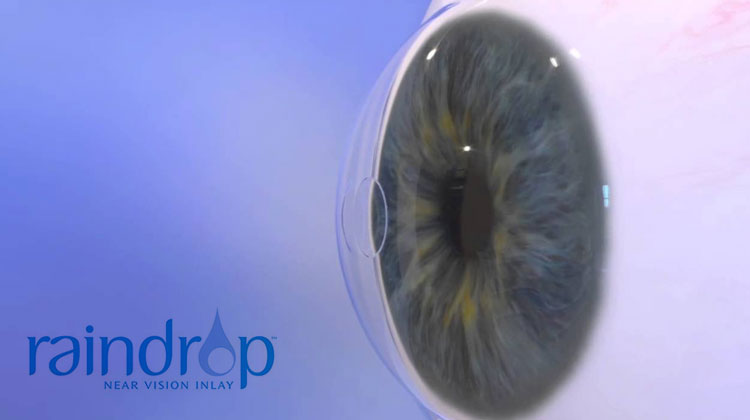Is Surprising Raindrop Approval a Sign of Friendlier FDA?

One of the takeaways that ophthalmic innovators might be reading into the unexpected and somewhat sudden approval of the Raindrop Near Vision Inlay is that the FDA may be becoming more responsive and industry friendly. But that wouldn’t be the only takeaway.
The FDA surprised virtually everyone in the ophthalmic surgical community June 29 when it announced the approval of ReVision Optics’ Raindrop Near Vision Inlay. Company officials were clearly unprepared for the early approval, having said on several occasions that it seemed very possible that the FDA might first convene an Ophthalmic Devices Panel Advisory Committee to discuss the merits of the device. Not only was that time-consuming step skipped, but the FDA approved the product several months before it was generally expected.
The Raindrop is made of a hydrogel material that looks a lot like a contact lens. It is implanted in the cornea of one eye to improve near vision in certain patients with presbyopia. It is the second FDA-approved implantable corneal device for correction of near vision. It follows the April 2015 approval of the Kamra, which is sold by AcuFocus, which, like ReVision Optics, is a VC-backed California company.
Whereas theRaindrop reshapes the cornea to improve reading, the Kamra works by blocking unfocused, peripheral light rays and allowing central light
rays to enter a small, 1.6-mm aperture in the center. Both devices are indicated only for patients who have not had cataract surgery.
Raindrop’s PMA was submitted in September 2015 and approved just nine months later, while the approval process for Kamra was long and tedious. The Kamra PMA was filed in March 2013, then the FDA required a panel meeting that took place in June 2014. Final approval came in April 2015 – 25 months after its initial PMA filing.
So, what accounts for the huge disparity in approval time? Without doubt, Raindrop’s clinical results were outstanding; among 373 patients followed for two years, 92% of them had 20/40 vision or better at near distances, according to the FDA announcement. Adverse events were generally mild and tolerable. Conversely, the Kamra clinical data were not nearly as robust and featured a significant explant rate, which led to major safety concerns.
It also clear that the FDA was a positive factor. ReVision’s CEO John Kilcoyne copiously praised the FDA for its hard work, its responsiveness, and its positive attitude in working with his company. “I have nothing but good things to say about the agency,” he said.
He also pointed to the stellar work of his clinical and regulatory team, which he said prepared an outstanding PMA.
So, what are the takeaways from this approval? First, excellent clinical results are essential to any regulatory clearance. Second, highly competent regulatory and clinical efforts are important. Third, it does appear that the FDA is becoming more responsive and industry friendly. Time will tell how much so, but for now this approval provides a very hopeful sign to the industry.
